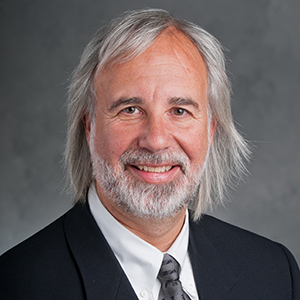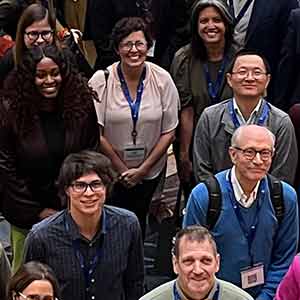Rick Woychik, Ph.D., director of NIEHS and the National Toxicology Program, traveled to Texas A&M University (TAMU) Oct. 27-28 for a Superfund Research Center event celebrating the renewal of TAMU’s Superfund Research Program (SRP) P42 grant. Woychik delivered remarks regarding the future of environmental health sciences at the event, visited faculty and graduate students in the toxicology and genetics programs, and explored the TAMU Institute of Biosciences and Technology in Houston.
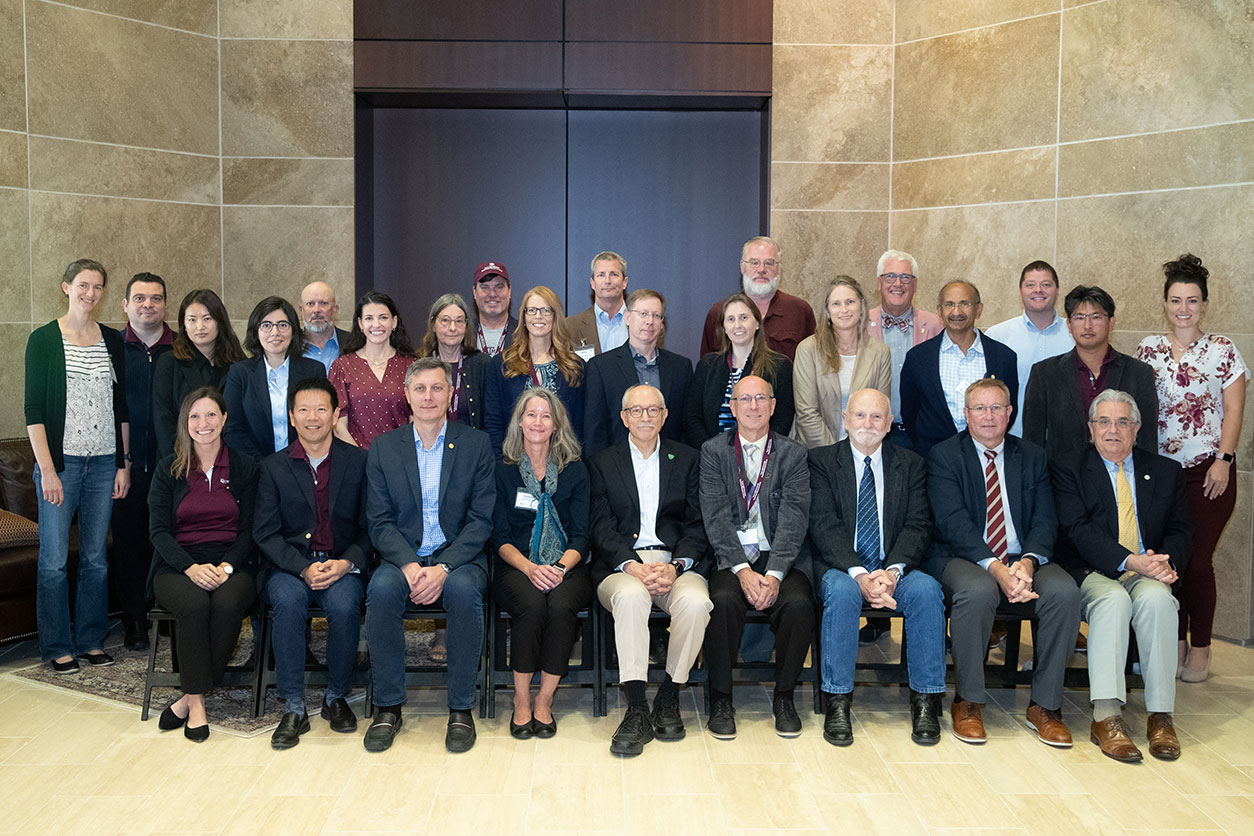 A group photo of members of the Texas A&M University Superfund Research Center and NIEHS’ Michelle Heacock, Ph.D., and Director Woychik (center, front row) at the renewal celebration on Oct. 27. (Photo courtesy of Texas A&M Veterinary Medicine)
A group photo of members of the Texas A&M University Superfund Research Center and NIEHS’ Michelle Heacock, Ph.D., and Director Woychik (center, front row) at the renewal celebration on Oct. 27. (Photo courtesy of Texas A&M Veterinary Medicine)“It was a real privilege to host Dr. Woychik,” said TAMU Superfund Research Center Director Ivan Rusyn, M.D., Ph.D. “We were pleased to show him the breadth of topics in our environmental health portfolio.”
Helping community partners develop resilience to climate change, development of alternatives to animal testing, and a myriad of research efforts on the environmental causes of disease, are just some of TAMU’s efforts that NIEHS helps to fund, according to Rusyn. The TAMU Superfund Research Center, which is one of 25 SRP-funded centers(https://tools.niehs.nih.gov/srp/programs/index267.cfm) at universities across the U.S., focuses on climate-related disasters, complex mixtures, and is part of the Disaster Research Response (DR2) community of practice.
A neighborhood toxic tour
The TAMU Superfund Research Center collaborates with a large number of community organizations to explore solutions for climate and environmental justice. One such community partner, Texas Environmental Justice Advocacy Services (T.E.J.A.S.), facilitates community-based participatory research projects with the university.
Juan Parras, founder and executive director of T.E.J.A.S.(https://www.niehs.nih.gov/research/supported/translational/peph/grantee-highlights/2021/#a923383), hosts what he has coined “Toxic Tours” of at-risk communities around the Houston area. Woychik participated in one such tour.
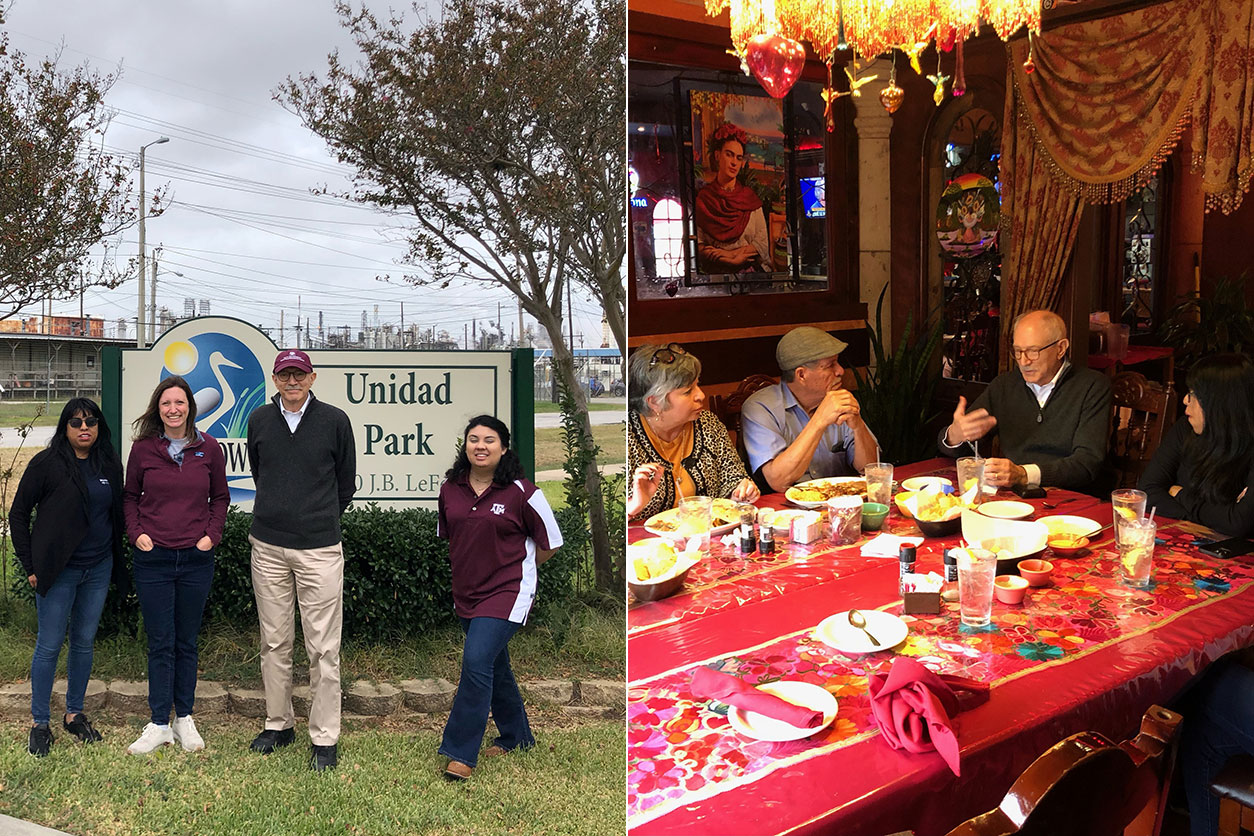 Woychik participated in a “Toxic Tour” that included Unidad Park, located in Baytown, Texas. He then ate lunch with Parras and the T.E.J.A.S. team and listened to their concerns regarding environmental and climate justice for the area. (Photos courtesy of Ivan Rusyn / TAMU)
Woychik participated in a “Toxic Tour” that included Unidad Park, located in Baytown, Texas. He then ate lunch with Parras and the T.E.J.A.S. team and listened to their concerns regarding environmental and climate justice for the area. (Photos courtesy of Ivan Rusyn / TAMU)“I saw neighborhoods with families and playgrounds for their children located within close proximity to the industrial sites,” said Woychik. “The research that NIEHS supports in these communities can help to identify potential health effects associated with living in these communities.”
One frequent stop on these toxic tours is Baytown’s Unidad Park. Baytown is a suburb of Houston where multiple industrial facilities operate. Residents there have expressed concerns about high levels of air pollution in the area, particularly creosote contamination. Creosote is a coal or wood tar, also known as soot, that effects the respiratory tract and skin.
Other SRP center celebrations
The University of Rhode Island’s Sources, Transport, Exposure and Effects of PFAS (per- and polyfluoroalkyl substances) program was also renewed for another five years.
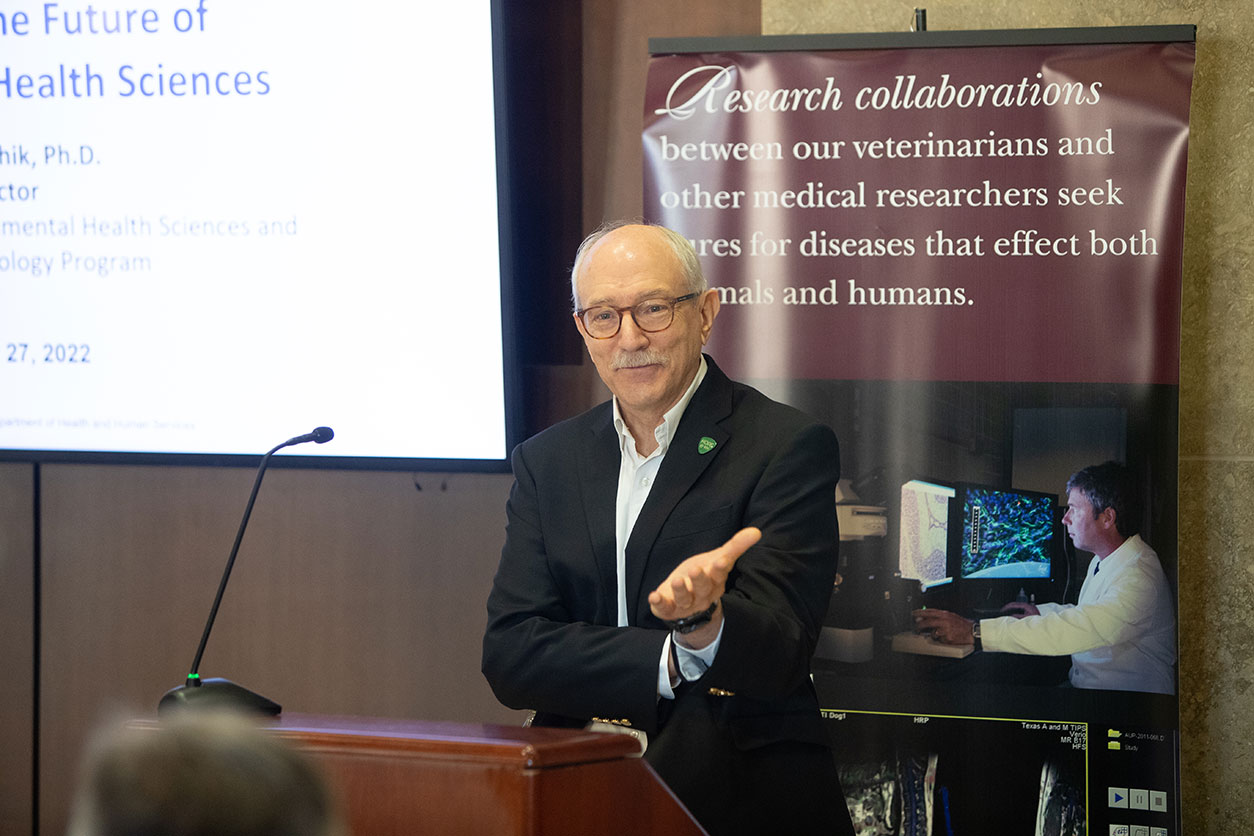 “Looking to the Future of Environmental Health Sciences” was the title of Woychik’s presentation. (Photo courtesy of Texas A&M Veterinary Medicine)
“Looking to the Future of Environmental Health Sciences” was the title of Woychik’s presentation. (Photo courtesy of Texas A&M Veterinary Medicine)Two new Superfund Research Centers also have been funded.
- Wayne State University will create a new Center for Leadership in Environmental Awareness and Research (CLEAR). The center will focus on indoor pollution and health outcomes associated with volatile organic chemicals (VOCs). VOCs are human-made chemicals used and produced in the manufacturing of paints, pharmaceuticals, and refrigerants, according to the Environmental Protection Agency.
- The Yale Superfund Research Center, Emerging Water Contaminants: Investigating and Mitigating Exposures and Health Risks, will examine the link between emerging water contaminants and liver cancer.
The 35th Anniversary SRP Annual Meeting will be held Dec. 14-16 in Raleigh, NC. For more information, visit the event website.
(Jennifer Harker, Ph.D., is a technical writer-editor in the NIEHS Office of Communications and Public Liaison.)





